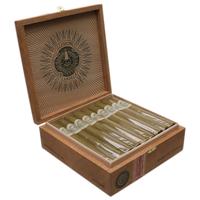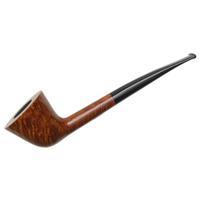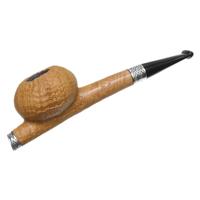I'm traveling this week and it's much tougher to access my files, but I think I've got the "freak" designation sorted out. I thought it rang a bell so I made time to do some real digging.
I found an item appearing in a tobacco trade journal around 1959 (I've got the precise citation at home). It's headed "'Freak' Briar for Special Markets". It mentions "Horry Jamieson", as the man whose "...particular task is the making of "freak" pipes for special markets". Horace Jameson (his real name) worked for Barling for many years, before eventually moving on to carve for various Cadogan brands.
I have a mini bio of him somewhere that I created a while ago, but the real point is clear in the article; it states that Jameson "...provides briars with bowls that are oblong, square, fluted, ornamented in a hundred different ways; bowls of every conceivable shape".
It goes on to say that:
"None is designed on paper. Each is born under Mr. Jamieson's [sic] hands on the machine. As a craftsman he "feels" the finished shape in the bruyere block, which comes to him as a flat piece known as a "plateau" but he varies it according to the way it lends itself to working".
One opinion from a knowledgeable collector I know is that such "uniques" both "spiced up the line", and were Barling's way of salvaging bowls that would have been wasted due to manufacturing errors or hidden defects.
Given all of this I would be surprised to find a "freak" sandblast; but anything is possible!
Personally I believe this identifies the origin of the "freak" stamp on your pipe, and that it's one of Horry Jameson's. The "Q" stamp is less clear to me, but to hazard a guess perhaps it's a country/market code...
Regards,
Jon
I found an item appearing in a tobacco trade journal around 1959 (I've got the precise citation at home). It's headed "'Freak' Briar for Special Markets". It mentions "Horry Jamieson", as the man whose "...particular task is the making of "freak" pipes for special markets". Horace Jameson (his real name) worked for Barling for many years, before eventually moving on to carve for various Cadogan brands.
I have a mini bio of him somewhere that I created a while ago, but the real point is clear in the article; it states that Jameson "...provides briars with bowls that are oblong, square, fluted, ornamented in a hundred different ways; bowls of every conceivable shape".
It goes on to say that:
"None is designed on paper. Each is born under Mr. Jamieson's [sic] hands on the machine. As a craftsman he "feels" the finished shape in the bruyere block, which comes to him as a flat piece known as a "plateau" but he varies it according to the way it lends itself to working".
One opinion from a knowledgeable collector I know is that such "uniques" both "spiced up the line", and were Barling's way of salvaging bowls that would have been wasted due to manufacturing errors or hidden defects.
Given all of this I would be surprised to find a "freak" sandblast; but anything is possible!
Personally I believe this identifies the origin of the "freak" stamp on your pipe, and that it's one of Horry Jameson's. The "Q" stamp is less clear to me, but to hazard a guess perhaps it's a country/market code...
Regards,
Jon











